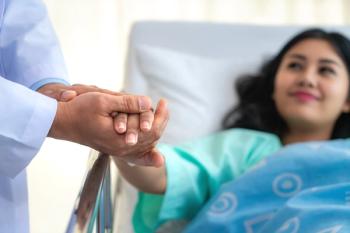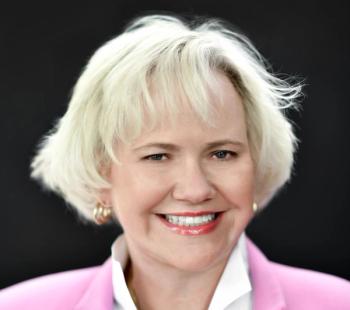
For medical schools, Supreme Court ruling on affirmative action changes the game
Medical colleges are disheartened by the decision. They aim to continue pursuing diversity efforts, but they said the court’s ruling could undo years of progress.
Most American medical schools have viewed improving diversity as an imperative, not a luxury or something that’s merely desirable.
Medical colleges and healthcare leaders say developing a more diverse physician workforce is crucial to improving health equity. Medical colleges have been drawing more students from disadvantaged groups, although there is plenty of progress to be made.
Now, medical schools say they must grapple with improving diversity in light of
With a 6-3
The Association of American Medical Colleges said in a
“Today’s decision demonstrates a lack of understanding of the critical benefits of racial and ethnic diversity in educational settings and a failure to recognize the urgent need to address health inequities in our country,” the AAMC said.
Now, medical schools are examining what they can do to advance their goals of bringing in more diverse applicants while not running afoul of the court’s ruling.
Geoffrey H. Young, the AAMC’s senior director of transforming the healthcare workforce, said the organization and medical schools are still working to understand the decision.
“I will say that it's a significant blow, I think, to healthcare and health equity,” he tells Chief Healthcare Executive®. “I believe that we're resilient. And, you know, those schools that remain committed to their mission, we will figure out how to educate a diverse workforce.”
Medical schools have been discussing the possibilities of an altered admissions landscape since the Supreme Court agreed to take the case, but Young says it’s difficult for institutions to revise their policies until the court released its ruling.
“The advice that we have provided our member medical schools is definitely, convene with teams within the medical school, and that includes their legal teams, but really be talking about reviewing their policies and practices,” Young said. “But we didn't know what the outcome would be. So we also didn't want to steer folks in one direction unnecessarily.”
“So now that the ruling is out, we are going to have a series of opportunities where we can communicate directly with our member institutions to talk about how the ruling may impact their processes.”
‘A significant setback’
Medical schools, colleges and universities condemned the court ruling.
Northwestern University President Michael Schill said in a
Northwestern has had a working group reviewing its admission policies in anticipation of the decision, and the university plans to move forward “within the law, while still protecting and supporting our institutional commitment to diversity.”
Ron Daniels, president of Johns Hopkins University, said in a
Daniels says the ruling shouldn’t disrupt Johns Hopkins’ programs to recruit students from limited incomes or those who are the first in their families to attend college, which account for nearly a third of the university’s first-year undergraduate students. He also said it shouldn’t alter efforts to attract students from cities or rural areas.
“But there is no doubt that the success we have enjoyed in ensuring full participation of underrepresented students is jeopardized by this decision,” Daniels said.
Marc Tessier-Lavigne, president of Stanford University, issued a
“Stanford will continue seeking, through legally permissible means, the broadly diverse student body that will benefit your educational experience and preparation for success in the world, and that will benefit our mission of generating knowledge,” he added.
Dennis S. Charney, dean of the Icahn School of Medicine at Mount Sinai and president for academic affairs for the Mount Sinai Health System, said in a message to the organization that it isn’t suspending efforts to improve diversity.
“We will carefully study the Supreme Court’s opinion to determine what implications, if any, it will have on our holistic approach to recruiting and admitting students to our institution,” Charney said in the email. “What I can state unequivocally is that the Icahn School of Medicine at Mount Sinai will continue its unwavering commitment to the core principles of diversity, equity, inclusion, and anti-racism.”
Suzanne Rose, senior vice dean for medical education at the Perelman School of Medicine at the University of Pennsylvania, said during an
“If we’re unable to use race in consideration of admissions, then we’re going to have to consider other ways to make sure that our goals related to diversity are achieved,” she said during the panel. Medical schools are looking beyond academic factors and taking a closer look at experiences or characteristics that would enable applicants to succeed, including obstacles they have overcome, she added.
Georges C. Benjamin, executive director of the American Public Health Association, said affirmative action has played a critical role in improving the diversity of the healthcare workforce.
“Without affirmative action, we risk turning the clock back on years of progress that have led to improved outcomes and a more diverse public health and health care workforce,” Benjamin said in a statement.
Some states already bar public universities from considering race in admissions. Washington state is one of those states. Still, Ana Mari Cauce, president of the University of Washington, said the institution will review the court ruling to see if it has any impact. “Yet our mission remains the same: to create an environment of opportunity and belonging for all our students,” Cauce said in a
At the same time, the
‘Disheartening’
The high court’s ruling comes as several states have moved to restrict diversity initiatives at public colleges and universities.
Florida Gov. Ron DeSantis signed legislation that
Now, medical schools and colleges are dealing with a court ruling that removes race from the equation in admissions. Even as colleges, universities and medical schools maintain their commitment to bringing more applicants from disadvantaged communities, they acknowledge the court’s decision makes the task more difficult.
Barbara Spivak, president of the Massachusetts Medical Society, echoed the concerns of many.
“Today’s decision by the Supreme Court is disheartening and raises concern about the future of equity and opportunity in medical education, as it threatens to undermine the efforts of the medical community to address racial disparities in health care access and outcomes,” Spivak said in a statement.






















































































